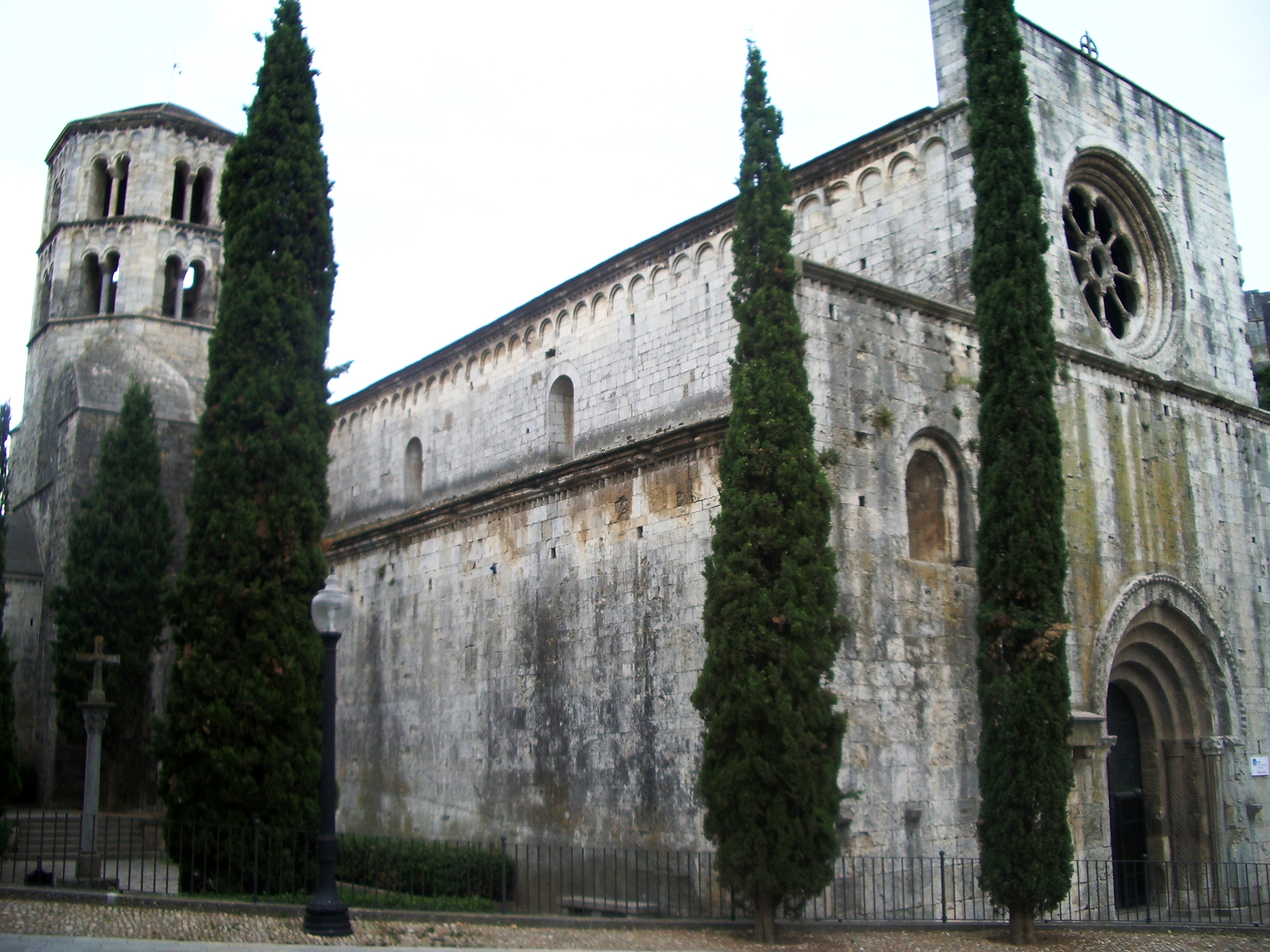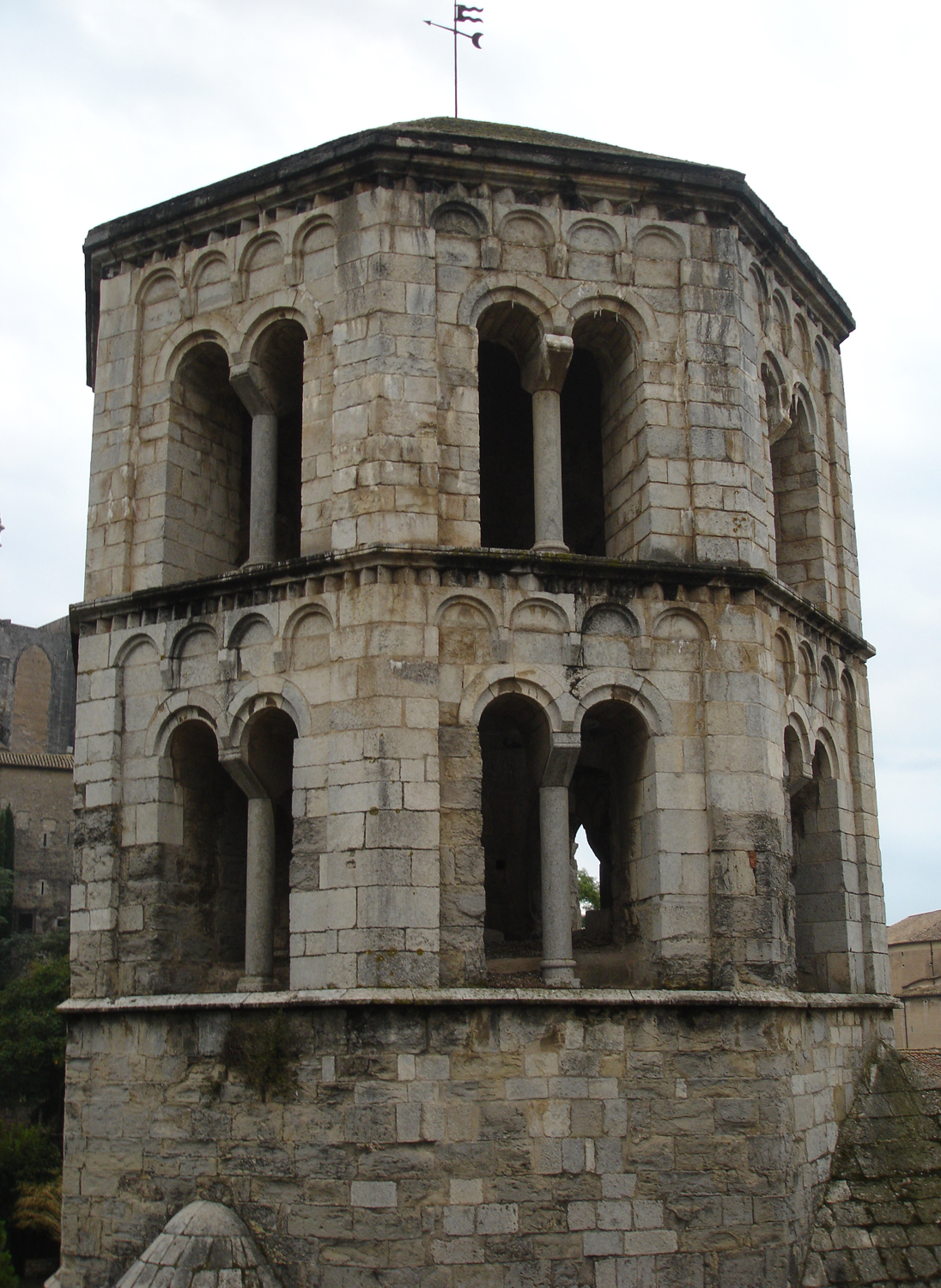Sant Pere De Galligants on:
[Wikipedia]
[Google]
[Amazon]

 Sant Pere de Galligants is
Sant Pere de Galligants is

Short description and photos of the monastery
{{coord, 41, 59, 20, N, 2, 49, 35, E, region:ES-CT_type:landmark_source:kolossus-cawiki, display=title Pere de Galligants Romanesque architecture in Catalonia Archaeological museums in Catalonia Buildings and structures in Girona Museums in Girona Religious organizations established in the 10th century 12th-century Roman Catholic church buildings in Spain Churches completed in 1130

 Sant Pere de Galligants is
Sant Pere de Galligants is Benedictine
, image = Medalla San Benito.PNG
, caption = Design on the obverse side of the Saint Benedict Medal
, abbreviation = OSB
, formation =
, motto = (English: 'Pray and Work')
, foun ...
abbey in Girona
Girona (officially and in Catalan , Spanish: ''Gerona'' ) is a city in northern Catalonia, Spain, at the confluence of the Ter, Onyar, Galligants, and Güell rivers. The city had an official population of 103,369 in 2020. Girona is the capital ...
, Catalonia
Catalonia (; ca, Catalunya ; Aranese Occitan: ''Catalonha'' ; es, Cataluña ) is an autonomous community of Spain, designated as a '' nationality'' by its Statute of Autonomy.
Most of the territory (except the Val d'Aran) lies on the nort ...
. Since 1857, it is home to the Archaeology Museum of Catalonia venue in the city. The name translates to English as "Saint Peter of Galligants", where Galligants refers to the River Galligants that runs past the abby.
History
The monastery was built from 992, outside the walls of Girona, whenRamon Borrell, count of Barcelona
Ramon Borrell ( ca, Ramon Borrell, es, Ramón Borrell; 972–1017) was count of Barcelona, Girona and Ausona from 992. He was the son of Borrell II of Barcelona and Letgarda of Rouergue, and was associated with his father in ruling the counties f ...
gave to the monks rights over the quarter of Sant Pere. The monks held the ruler of the quarter until 1339, when King Peter IV of Aragon restored it to Aragon.
In 1117 Ramon Berenguer III of Barcelona
Ramon Berenguer III ''the Great'' was the count of Barcelona, Girona, and Ausona from 1086 (jointly with Berenguer Ramon II and solely from 1097), Besalú from 1111, Cerdanya from 1117, and count of Provence in the Holy Roman Empire, from 1112, ...
united the monastery to the Abbey of Sainte-Marie de Lagrasse, in what is now France, though Sant Pere kept an abbot of his own and a large degree of autonomy. Sant Pere was never a big community, and the church was not the local parish, and only baptisms were held in the monastery. In 1362, when the monastery was enclosed within the city's walls, it was redesigned to a more defensive shape. It started to decay from the 15th century, and in 1592 it was united to the also decaying monasteries of Sant Miquel de Cruïlles and Sant Miquel de Fluvià
Sant Miquel de Fluvià is a municipality in the ''comarca'' of Alt Empordà, Girona, Catalonia, Spain. The original part of the village lies just to the north of the river Fluvià and is dominated by the tower of an 11th-century church that was ori ...
. In 1835 the monastery included an abbot and four monks. It was declared a national monument in 1931.
The small cloister is an example of Catalan Romanesque architecture
Romanesque architecture is an architectural style of medieval Europe characterized by semi-circular arches. There is no consensus for the beginning date of the Romanesque style, with proposals ranging from the 6th to the 11th century, this lat ...
. The northern gallery dates to 1154, while the remaining ones are from 1190. The capitals of the columns have motifs very similar to those in the cloisters of Sant Cugat del Vallès
Sant Cugat del Vallès (; es, San Cugat del Vallés, link=no) is a town and municipality north of Barcelona, Catalonia, Spain. Known as ''Castrum Octavianum'' in antiquity (which literally means ''the castle of Octavianus'') and as ''Pins del Val ...
or in the Cathedral of Girona
Girona Cathedral, also known as the Cathedral of Saint Mary of Girona (in Catalan language, Catalan: ''Catedral de Santa Maria de Girona'' or simply ''Catedral de Girona''), is a Catholic Church, Roman Catholic church architecture, church loca ...
. Some depict scenes from Jesus' life, while others show typical Romanesque elements such as lions or sirens.

Overview
The Romanesque church was built in 1130, and has a nave and two aisles with a transept, and four apses. The portal, in a rather archaic style, comes probably from a previous building. It is surmounted by a rose window with a diameter of 3.5 meters. The interior features a series of side columns, with capitals having vegetable motifs, used to reinforce the central vault. The capitals of the apse columns are more elaborated, and were probably executed by different artists. Some of them have been attributed to the Master of Cabestany. The bell tower has an octagonal plan and two sectors, the upper one, of two floors featuring with double arches divided by columns, decorated withLombard band
A Lombard band is a decorative blind arcade, usually located on the exterior of building. It was frequently used during the Romanesque and Gothic periods of Western architecture. It resembles a frieze of arches.
Lombard bands are believed to h ...
s.
See also
*Monastery of Sant Daniel, Girona
The Monastery of San Daniel (Catalan: ''Monestir de Sant Daniel'') is a religious complex in Girona, Catalonia, northern Spain.
It was founded in the early 11th century by will of countess Ermesinde of Carcassonne, who wanted to found a nunnery he ...
Sources
*External links
Short description and photos of the monastery
{{coord, 41, 59, 20, N, 2, 49, 35, E, region:ES-CT_type:landmark_source:kolossus-cawiki, display=title Pere de Galligants Romanesque architecture in Catalonia Archaeological museums in Catalonia Buildings and structures in Girona Museums in Girona Religious organizations established in the 10th century 12th-century Roman Catholic church buildings in Spain Churches completed in 1130